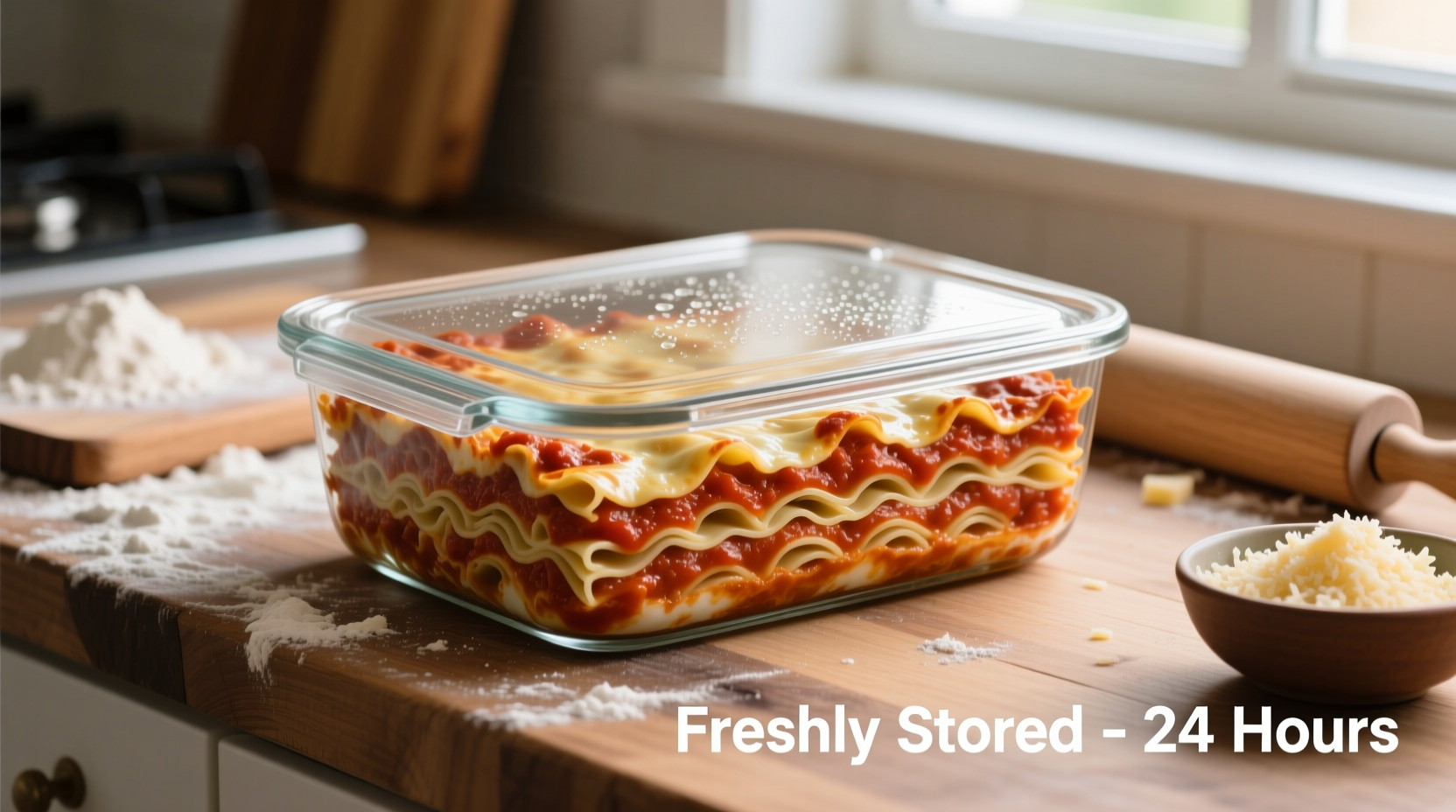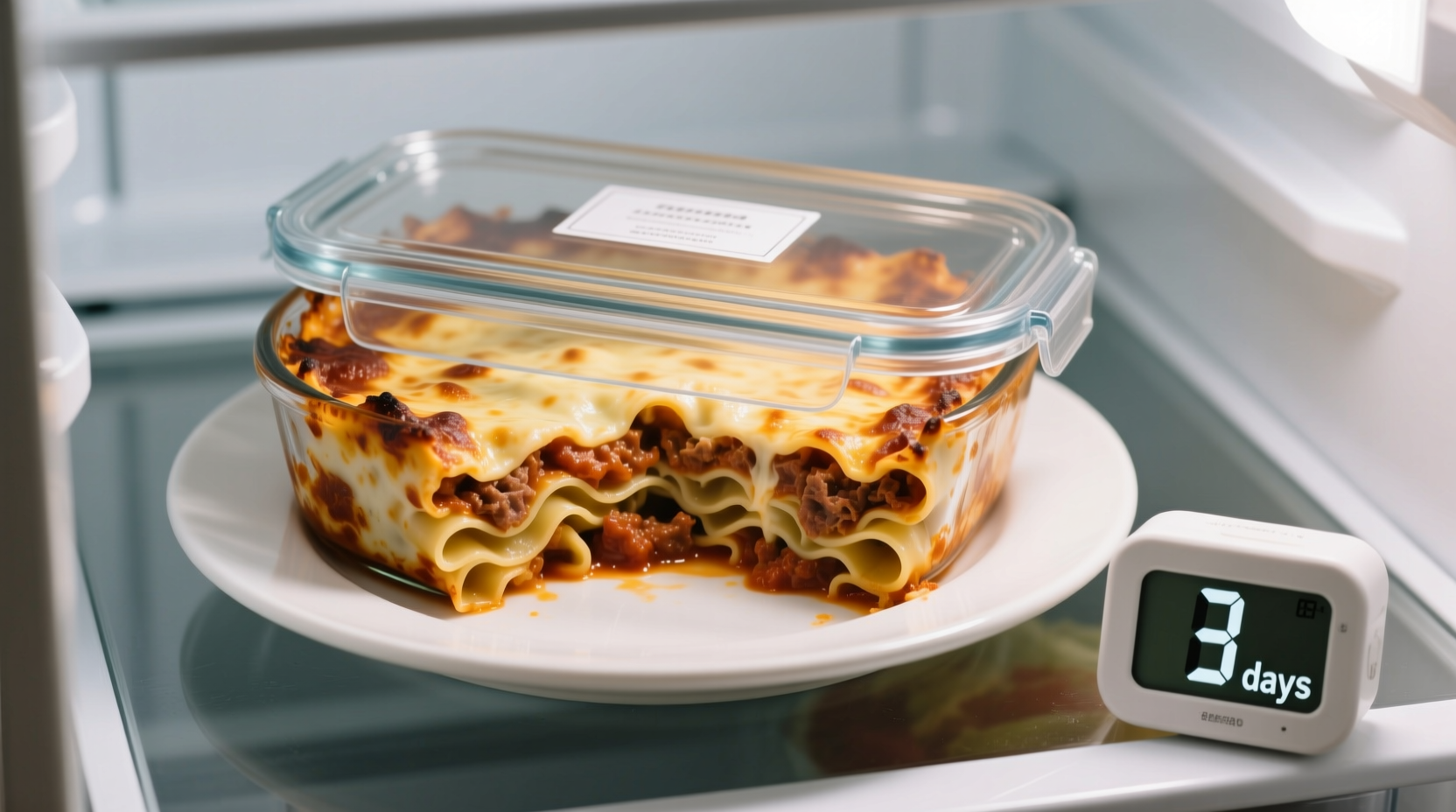Wondering if that delicious lasagna leftover in your fridge is still safe to eat? You're not alone. Each year, millions of home cooks face this exact question, risking foodborne illness when unsure about proper storage timelines. In this guide, you'll get science-backed storage guidelines from food safety experts, practical storage techniques used by professional chefs, clear spoilage indicators, and freezing methods that preserve your lasagna's quality for weeks.
The Science Behind Lasagna's Refrigerator Shelf Life
Understanding why lasagna has a limited refrigerator lifespan starts with food science. Cooked pasta dishes like lasagna create an ideal environment for bacterial growth due to their moisture content, protein-rich ingredients (meat, cheese), and neutral pH levels. The USDA's Food Safety and Inspection Service confirms that cooked foods containing meat and dairy enter the "temperature danger zone" (40°F-140°F) where bacteria multiply rapidly.
| Storage Condition | Maximum Safe Duration | Key Risk Factors |
|---|---|---|
| Refrigerator (≤40°F) | 3-5 days | Bacterial growth in dairy/meat components |
| Room Temperature | 2 hours max | Rapid multiplication of pathogens |
| Freezer (0°F) | 2-3 months | Quality degradation over time |
This evidence-based timeline comes from the FDA Food Code, which specifies that cooked food combinations containing potentially hazardous ingredients should be consumed within 72 hours. However, the additional 1-2 days for lasagna accounts for its layered structure, which can slow moisture migration compared to other casseroles.
Proper Cooling and Storage Techniques
How you store your lasagna dramatically impacts its actual shelf life. Professional kitchens follow these evidence-based steps to maximize safety and quality:
- Cool rapidly: Divide large portions into smaller containers to cool within 2 hours (per FDA guidelines). Leaving lasagna at room temperature longer creates ideal conditions for Staphylococcus aureus growth.
- Airtight containment: Use containers with tight-fitting lids or vacuum sealing. Glass containers prevent odor absorption better than plastic.
- Temperature verification: Keep your refrigerator at 37-40°F using an independent thermometer - most built-in thermostats are inaccurate.
- Strategic layering: Place foil directly on the lasagna surface before sealing container to prevent moisture condensation.
A common mistake home cooks make is placing hot lasagna directly in the refrigerator. This raises the internal temperature of your fridge, potentially compromising other foods. Instead, let it cool on the counter for 30-60 minutes until steam stops rising, then refrigerate.

Spotting Spoilage: Beyond the Expiration Date
While the 3-5 day rule provides a safety baseline, actual spoilage depends on multiple factors. Trust these sensory indicators more than calendar dates:
- Visual changes: Discoloration (grayish hue), mold spots (even small ones), or separation of ingredients
- Odor test: Sour or unpleasant smell - fresh lasagna should have a pleasant tomato-cheese aroma
- Texture issues: Slimy surface or excessively dry, hardened edges
- Container clues: Bulging lids or excessive condensation indicate gas-producing bacteria
When in doubt, throw it out. The USDA Food Safety and Inspection Service emphasizes that harmful bacteria like Listeria don't always produce visible signs but can cause serious illness. Never taste questionable food to "check" if it's spoiled.
Extending Shelf Life: Freezing Lasagna Properly
For longer storage, freezing is your best option. Follow these professional techniques for optimal results:
- Portion control: Freeze individual servings for quicker thawing and reduced waste
- Double protection: Wrap portions in parchment paper, then place in freezer bags with air removed
- Label clearly: Include date and contents - frozen lasagna maintains quality for 2-3 months
- Thaw safely: Refrigerate overnight or use microwave's defrost setting - never thaw at room temperature
Research from the National Center for Home Food Preservation shows that properly frozen lasagna retains both safety and quality for 2-3 months. Beyond this timeframe, while still safe if continuously frozen, texture and flavor degrade significantly due to ice crystal formation.
Safe Reheating Practices
Even properly stored lasagna requires correct reheating to ensure safety. Follow these guidelines:
- Heat to an internal temperature of 165°F (74°C) - use a food thermometer for accuracy
- Reheat only the portion you'll consume immediately
- Add moisture (a splash of broth or sauce) to prevent drying
- Stir occasionally when reheating in microwave for even heating
The CDC recommends against partial reheating, as this keeps food in the danger zone longer. Always verify temperature in multiple spots, especially with layered dishes where heat distribution can be uneven.
Special Considerations for Different Lasagna Varieties
Not all lasagnas have identical shelf lives. Consider these variations:
- Vegetarian versions: May last the full 5 days as they lack meat's faster spoilage rate
- Cheese-heavy recipes: Ricotta and cottage cheese shorten shelf life to 3-4 days
- Gluten-free pasta: Often more moisture-retentive, requiring consumption within 3 days
- Leftover restaurant portions: May contain preservatives but follow standard 3-4 day rule
When storing lasagna with raw egg components (like some ricotta mixtures), the USDA recommends consuming within 3 days due to increased salmonella risk. Always check your specific recipe's ingredients to determine the most conservative timeframe.











 浙公网安备
33010002000092号
浙公网安备
33010002000092号 浙B2-20120091-4
浙B2-20120091-4